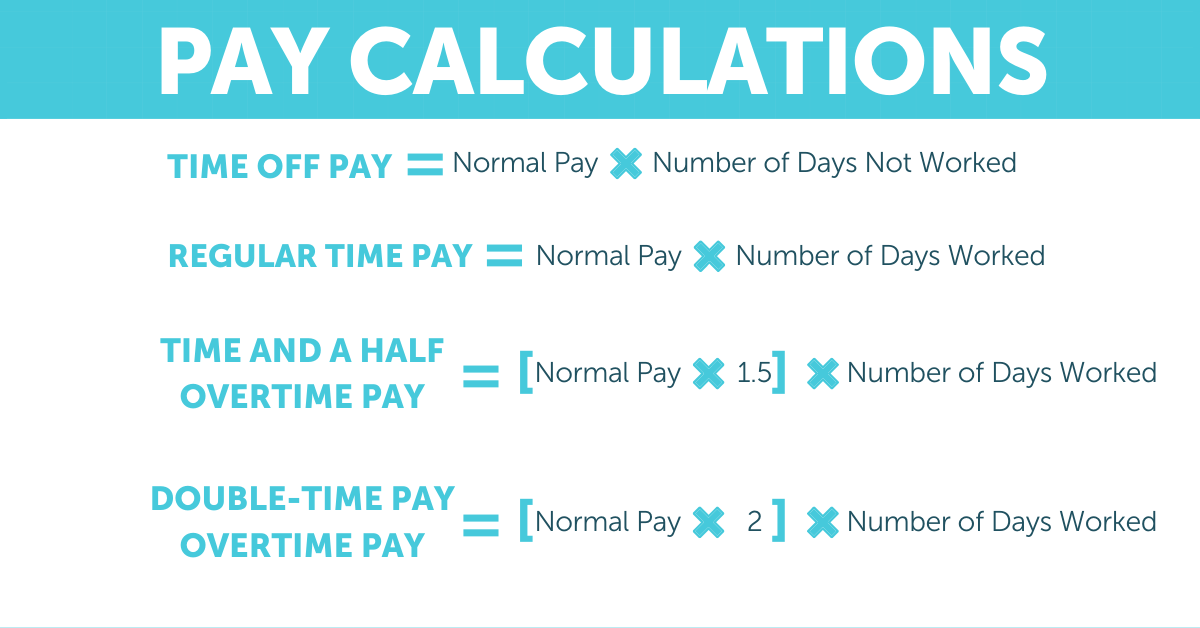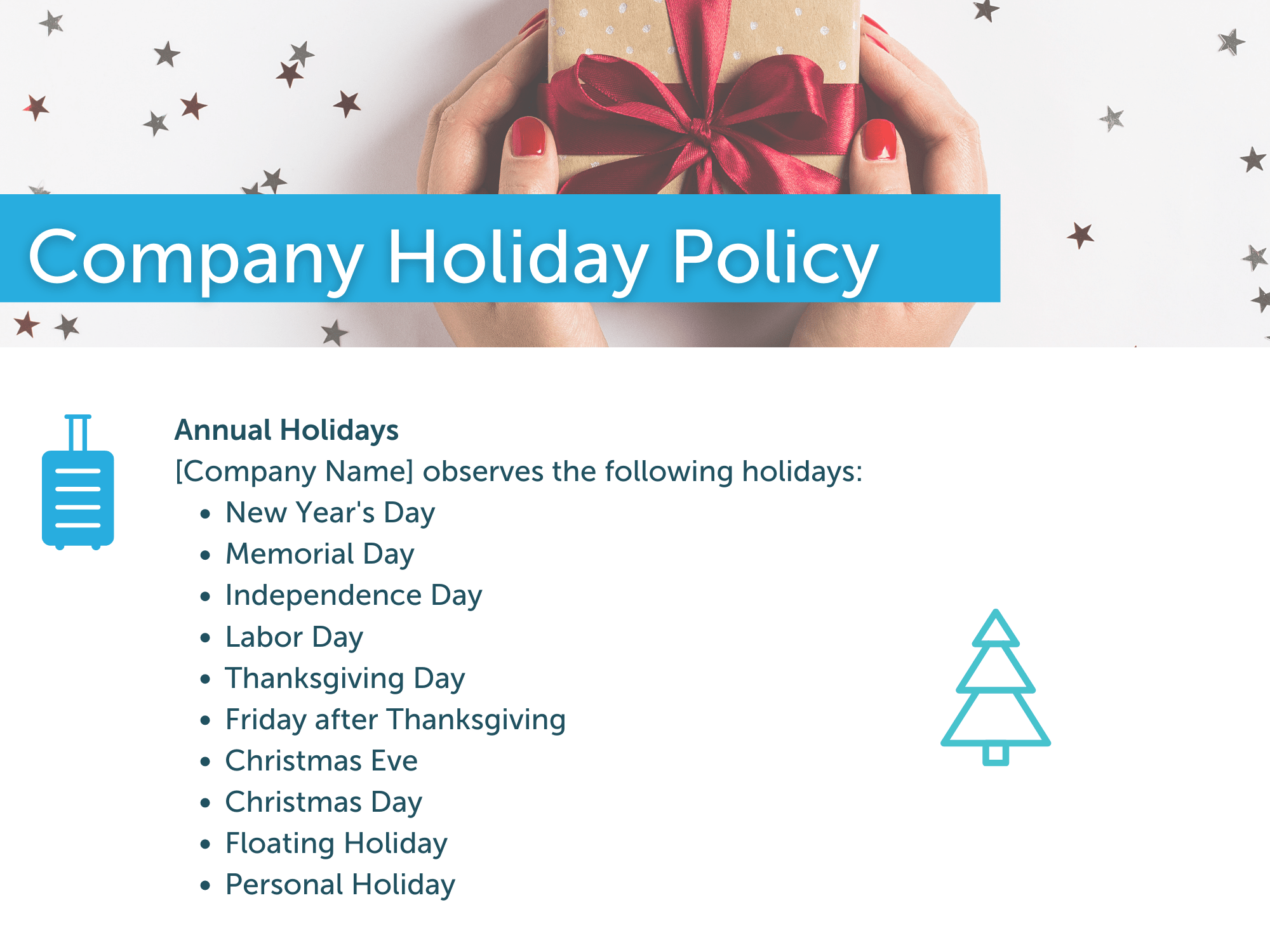Managing Employee Time Off This Year
Managing time off during the holidays for an entire workforce can be difficult. Some employees earn paid-time-off, while others earn incentives for working holidays. The task of manually handling these different forms of labor payment can be overwhelming. However, there are ways to automate these processes and streamline your organization’s holiday hustle for good.
In this article, we will show you four ways to manage time off during the holidays. We’ll also discuss the different types of holiday pay so you can keep your staff informed and incentivized throughout the winter season.
What is Holiday Pay?
Holiday pay is the monetary amount an employee receives while working or not working during a designated holiday time-frame. A manager can categorize holiday income in the following ways:
- Time Off Pay: This type of pay occurs when employees don’t work during the holiday but receive paid time off. Organizations like HubSpot sometimes offer unlimited paid time off or paid rejuvenation days for employees. Meanwhile, other organizations close during holidays or run reduced staff so employees can utilize holiday time to rest.
- Overtime Pay: Some companies pay time-and-a-half or double-time for working on a holiday. While this isn’t required, it is an incentive that encourages employees to work. It also helps organizations ensure they are adequately staffed during popular holidays.
- Regular Hours Pay: This is when employees work during the holiday and earn wages as if it’s a typical working day.
Do I Have To Offer Holiday Pay?
No, the Fair Labor Standards Act (FLSA) does not require payment to hourly or part-time (non-exempt) employees for time not worked. This includes vacations or holidays (federal or otherwise). Likewise, the employer can pay regular wages for hours worked.
NOTE: Salaried (exempt) employees who do not receive overtime must be paid their full weekly salary if they are given a day off during the week in which the holiday falls.
How To Calculate Holiday Pay:

4 Ways to Manage Holiday Time Off
1. Leverage Holiday Preloading
Many HR managers spend extra time processing payroll with holiday hours to ensure employees who work receive the correct pay amounts. Using tools like holiday preloading can make this process much easier and allows you to take a more proactive approach. Holiday preloading automates the process of assigning holiday hours to employee time cards based on preset conditions. This tactic is especially helpful during the hectic year-end season. Holiday preloading lets managers schedule holiday pay or hourly income based on specific criteria like:
- Pay group
- Employee type
- Wage type
- Employment type
- Length of service
Holidays can be added in advance using payroll and HR technology, and only active employees will receive the scheduled holiday pay. This tool also eliminates the need to manage holiday pay on an individual level each pay period. If your company doesn’t offer holiday time off, managers can bulk-assign holiday pay to employees.
Does Your Provider Offer Holiday Preloading?
If not, now is the perfect time to make the switch to a better payroll and HR platform.
2. Create a Company Holiday Policy
Managing holiday pay can be hectic, especially if employees don’t understand how holiday pay works or when to expect payments. Creating a company holiday policy and including it in an employee handbook is beneficial for you and your workforce.
It streamlines questions for HR and standardizes holiday pay across the board. Here is an example of APS’ company holiday policy that you can use as a starting point for your organization.

3. Utilize Blackout Dates
Blackout dates, also known as prohibited dates, are a handy tool you can use to ensure staffing levels are met during busy periods. Available in a payroll and HR platform, this functionality restricts employees from requesting time off during critically-staffed periods. When employees are submitting a time-off request, they will receive a message that they have selected prohibited dates.
Managers can even receive blackout date alerts to streamline approvals for employee time-off requests. It’s important to remember the following pieces of information when incorporating blackout dates throughout your workforce:
- Whether or not an employee has submitted a time off request before a blackout date has been set.
- Whether or not an employee submits a time-off request with an included prohibited date after the blackout date has already passed.
Blackout dates help you manage the number of employees requesting similar times to avoid under-staffing. If your organization offers time-and-a-half for holiday workers, you can expect a higher labor expense during the holiday pay period.
4. Consider a Skeleton Crew
When several employees are on holiday, it’s essential to keep staffing numbers up to operate as usual. Known as a skeleton crew, this refers to the minimum number of employees required to keep vital services up and running. Consider utilizing a payroll and HR provider to help you manage skeleton crew scheduling.
Check to see if your provider offers scheduling software with pre-built templates. Preparing your schedule ahead of time equips your organization to have the staff it needs for the upcoming holiday. This preparation allows the organization to run smoothly and keeps wages consistent. Here are a few more benefits of how a payroll and HR provider can help you with holiday staff scheduling and pay:
- View and edit time-off requests in advance, so your holiday schedule is accurate and up-to-date.
- Schedule employees in bulk, which reduces time spent on individual labor tasks and increases availability for more strategic initiatives.
- Add mass hours to employee time cards to limit manual errors for time worked and maintain consistency in holiday wages.
A Jolly Holiday, Indeed.
Now that you’ve learned the different ways to manage holiday time off, how do you implement each idea? Consider utilizing an automated and unified payroll and HR platform. You’ll streamline company holiday policies, automate employee scheduling, and accurately pay your staff during holiday rushes.
With a comprehensive payroll and HR system, it’s easier for employers to use all four tactics. Employees will be scheduled appropriately as well as paid timely and accurately for holidays worked. Your workforce will also appreciate a communicative and streamlined approach to managing time off during the holidays. Last but not least, you will have a jolly holiday streamlining your manual tasks for good.
About APS:
APS has a mission: to make payroll and HR easier. We provide our clients and partners with intuitive technology delivered with personalized service and support. Our unified solution is designed to simplify workforce management tasks. Process payroll in hours, not days. Automate HR workflows to be more strategic. Elevate the employee lifecycle with a single-system platform. We are APS, your workforce partner.
Businesses choose APS as their workforce partner because of our focus on the customer experience. As a result, we continually maintain 98% customer retention and satisfaction rates. For more information on APS and how we can help make payroll and HR easier for your business, call us at 855.945.7921.





